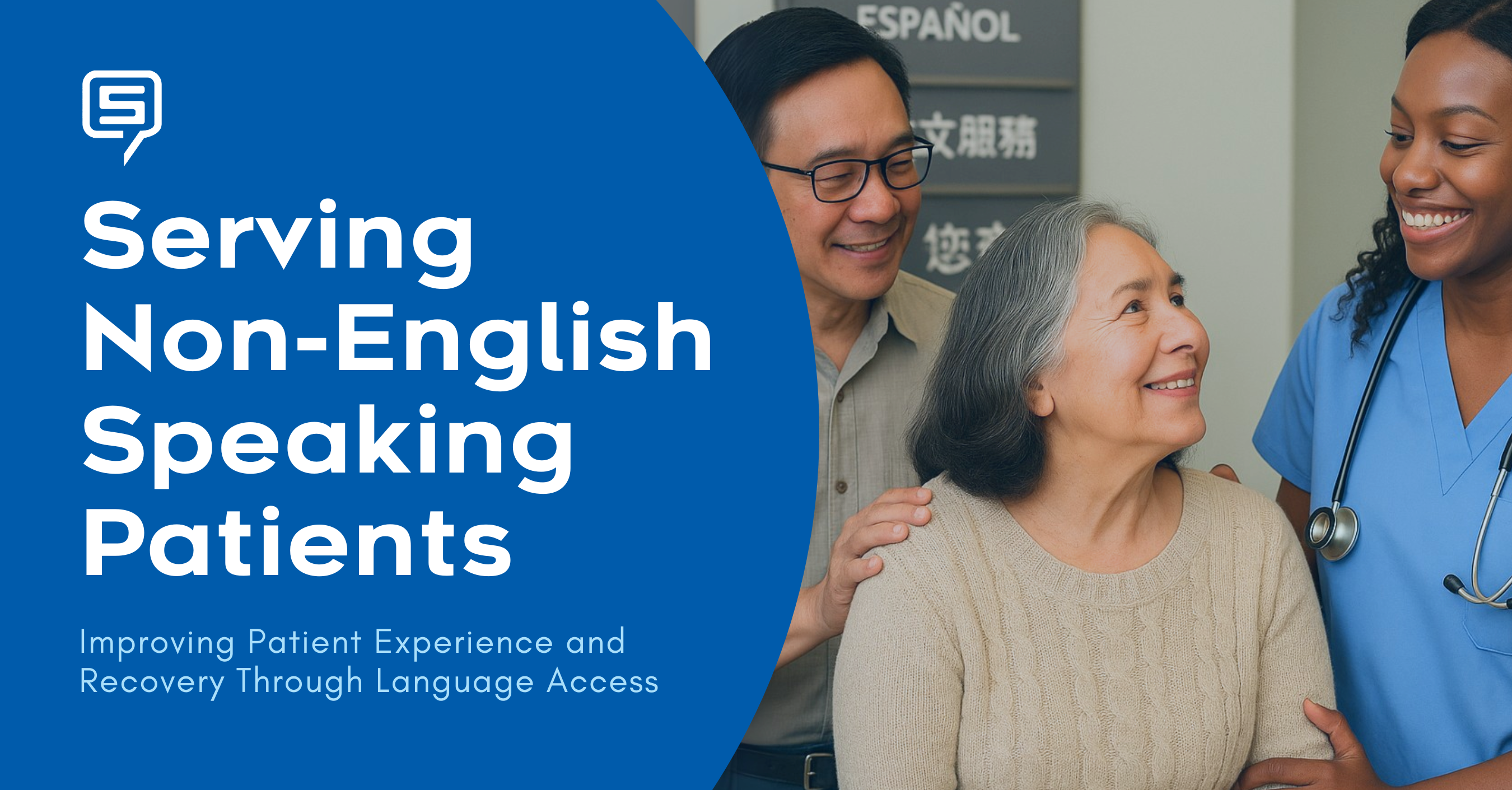Serving Non-English Speaking Patients

- 8.6% of the US population reports limited English language skills
- 22% of the US population speaks a language other than English at home
If your organization hasn’t yet developed a comprehensive communication strategy for non-English speaking patients and their families, now is the time. Not only can this improve the patient experience—it can also lead to better engagement and increased recoveries.
The Power of Speaking a Patient’s Language
When patients can communicate in their preferred language, even simple conversations become more effective. Providing access to multilingual representatives or language line interpreters can immediately enhance satisfaction and trust. But successful communication goes far beyond the call center.
Start with Data
Begin by analyzing your patient population to determine the most commonly spoken languages beyond English. Spanish is widespread, but languages like Haitian Creole in the South or Mandarin on the West Coast are also on the rise. The Joint Commission requires providers to collect preferred language data, which can typically be found in your EHR. Use this data to inform your next steps.
Expand Communication Across Channels
For language groups that represent a significant portion of your patients, consider offering the following in their native language:
- Written communications (statements, notices, letters)
- Digital communications (email, SMS, chat)
- IVR/Interactive Virtual Assistant scripts
- Payment portals
- Registration and intake processes
Incorporate Cultural Awareness
Effective communication also means respecting cultural nuances—such as holidays, time of day for outreach, and even tone and word choice. Tailoring your messaging with cultural sensitivity can strengthen patient relationships and improve response rates.
Let’s Build Your Strategy Together
Your patients deserve to be heard and understood. Contact your State Account Executive today to explore how language customization can improve both patient satisfaction and your organization’s financial outcomes.